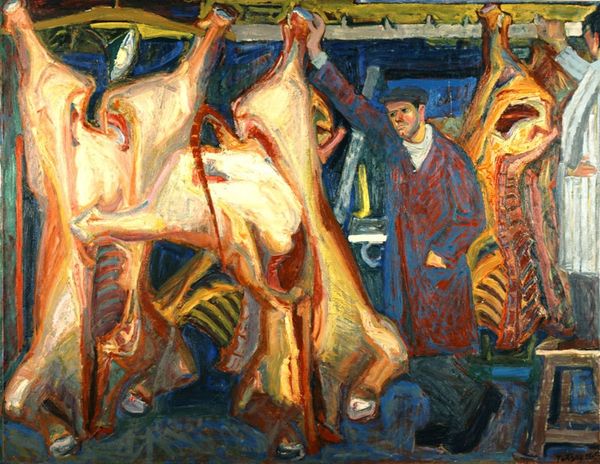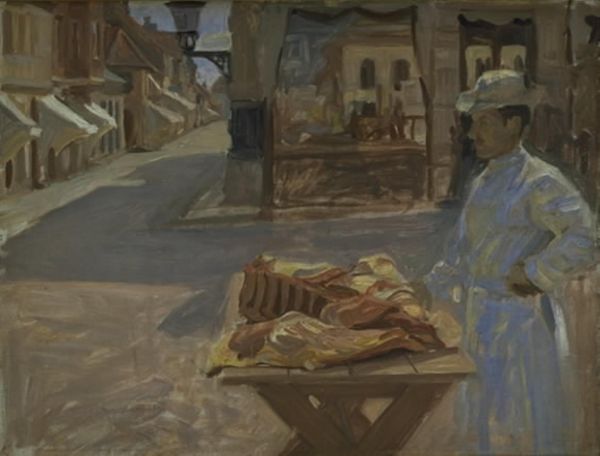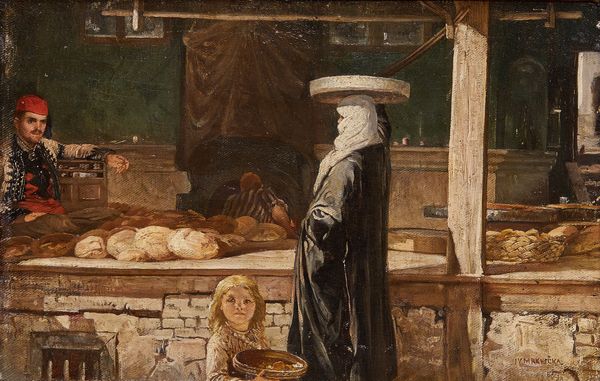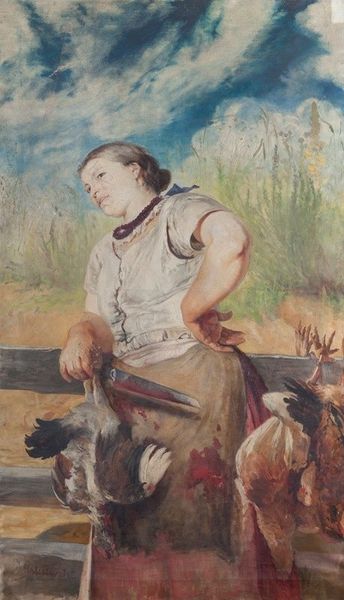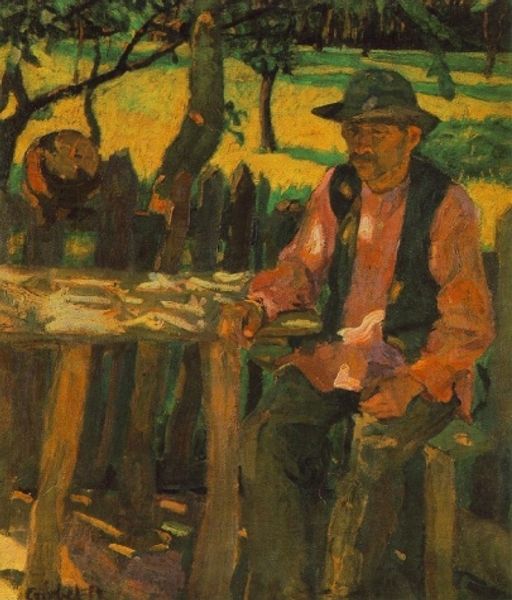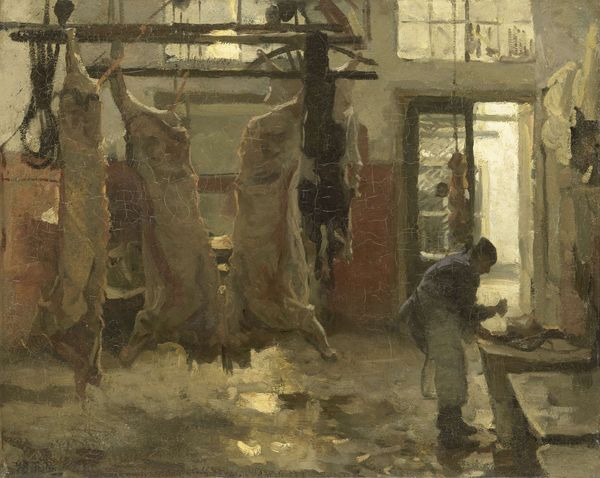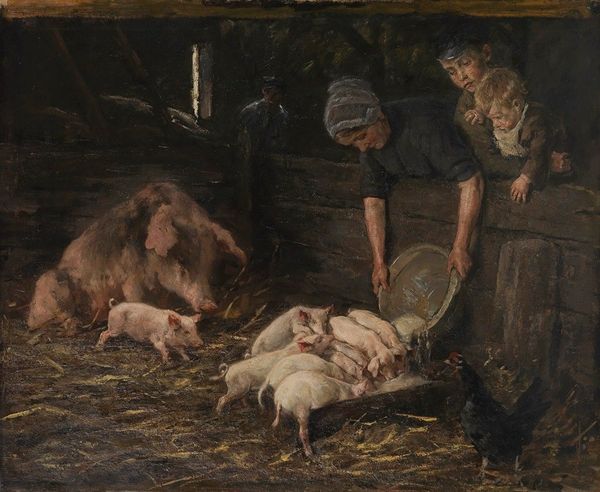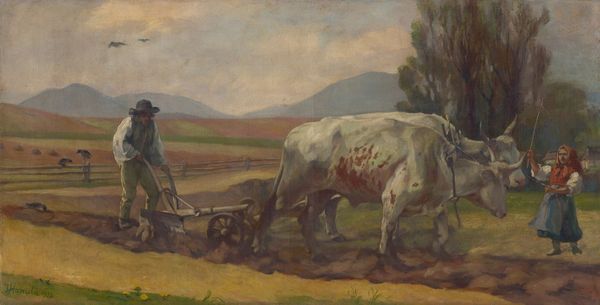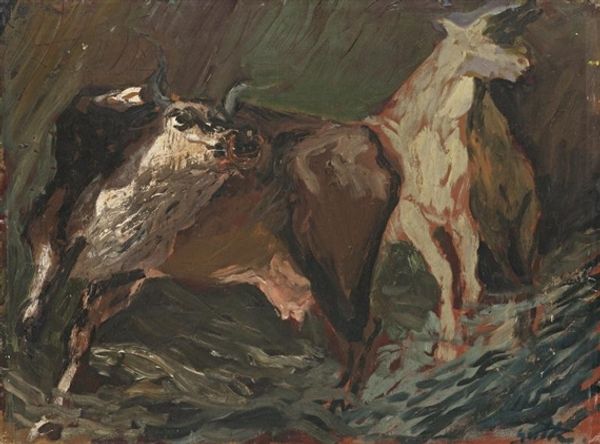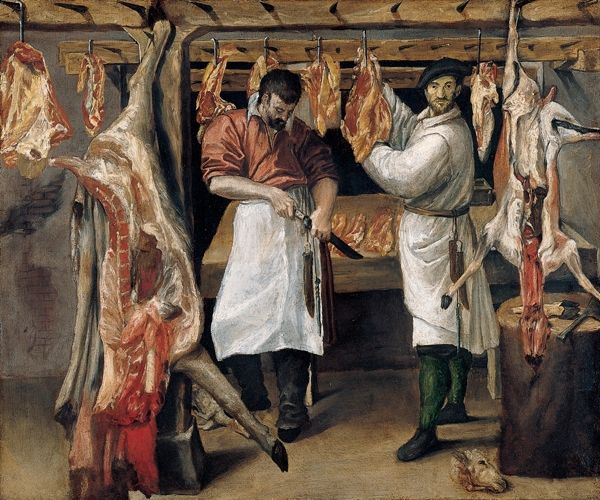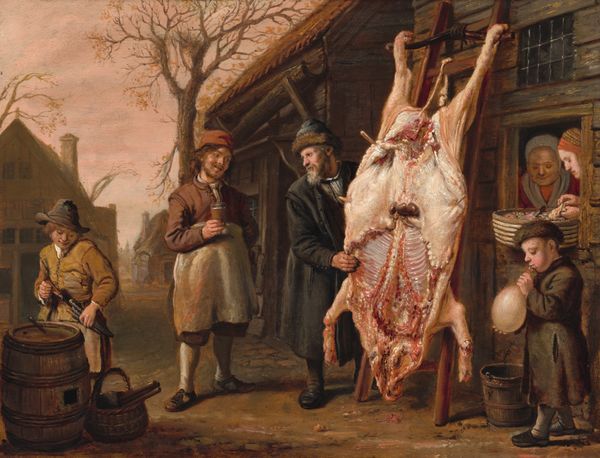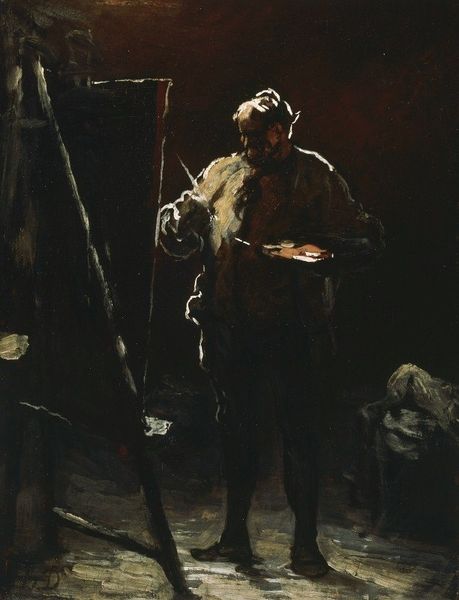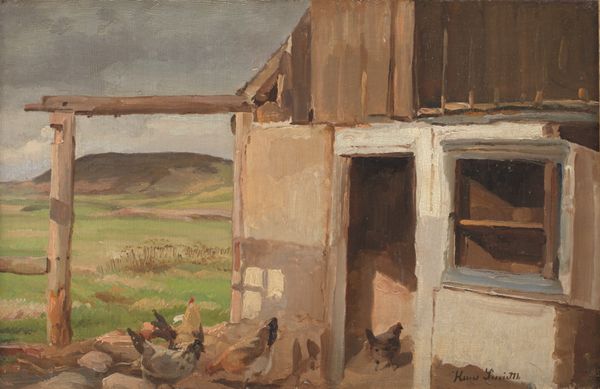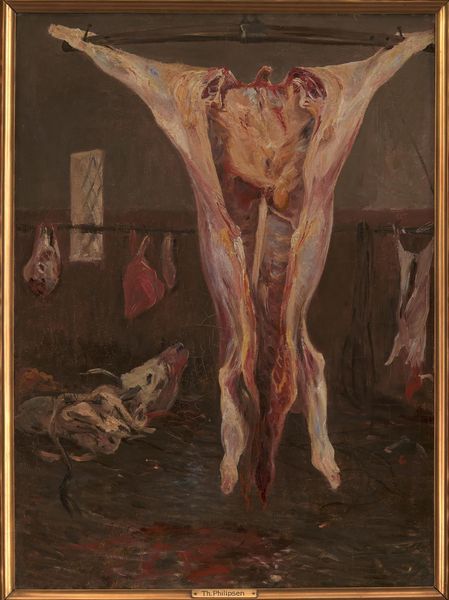
painting, oil-paint
#
portrait
#
painting
#
oil-paint
#
soviet-nonconformist-art
#
figuration
#
oil painting
#
painting painterly
#
genre-painting
#
realism
Dimensions: 116 x 89 cm
Copyright: Pyotr Konchalovsky,Fair Use
Curator: Pyotr Konchalovsky's "Carcass of Calf," painted in 1946, confronts us with a raw depiction of rural life. It's rendered in oil paint with vigorous, expressive strokes. Editor: It's striking – almost jarring. The palette is dominated by fleshy pinks and stark whites, contrasted against the dark wood of the cabin. There's a rawness here that's quite visceral. Curator: Absolutely. Consider the placement: a butchered calf hangs prominently in the foreground. In many cultures, animal sacrifice holds symbolic weight – often linked to sustenance, ritual, and cycles of life and death. It speaks to human dependency on the natural world. Editor: And the figure, almost hidden in the shadows, sharpening his knife – he becomes an emblem of human intervention in nature, shaping it to his will. The setting also seems significant. It's a humble, rural setting, suggesting this isn't an abstract concept for the artist, but lived experience. Curator: This canvas speaks to the socio-economic conditions prevalent in post-war Russia, highlighting the necessity of providing food. Also the genre scene places the action within the context of labour, resonating with soviet values of valuing and elevating working class efforts. The visual style employed here has been coined soviet non-conformist art. Editor: The artist avoids sentimentalizing this scene. There is very little to make me like what's presented, rather an unsettling starkness. We're asked to consider not just the product, but also the process of obtaining sustenance, that is a complex and rather ruthless business, wouldn't you agree? Curator: True, Konchalovsky refuses idealization. The scene feels honest and authentic. We might ask ourselves, "what rituals persist into modern day?" This work also provides an honest peek behind closed doors, one in which the source of sustenance is displayed with complete clarity. Editor: Indeed. I leave with a renewed awareness of where my meat comes from and perhaps a more respectful view toward what provides us with sustenance. Curator: An insightful reflection on nature, labor, and existence. Konchalovsky reminds us that even in still life, life continues in ways we expect and, occasionally, ways that may take us by surprise.
Comments
No comments
Be the first to comment and join the conversation on the ultimate creative platform.
